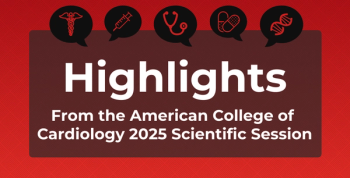
Targeting Triglycerides to Reduce CV Risk
The rationale for studying therapies that target hypertriglyceridemia to reduce cardiovascular risk.
Transcript
Deepak L. Bhatt, MD, MPH: We’ve had a really nice discussion about LDL [low-density lipoprotein] lowering and its importance in the ways of doing it effectively, hopefully cost-effectively. What about risk beyond LDL and associated with elevated triglycerides? Dr Navar, you’ve done a lot of great work in this area showing that high normal levels of triglycerides are associated with excess cardiovascular risk. Why is that, and what can we do to target that risk?
Ann Marie Navar, MD, PhD: The epidemiology of triglycerides is really confusing, and that’s in part because so many things that increase heart disease risk also increase triglycerides, like metabolic syndrome, poor diet, and uncontrolled blood sugar. Whether triglycerides are just a really good marker of a bunch of other bad things or are a bad thing on their own still is up for debate, but the answer is probably a little bit of both.
We know from a number of studies that increased triglycerides is associated with increased risk. My team recently published data from a number of the cohort studies showing that risk increases with the increase in triglycerides almost linearly, starting very, very low and going up to 150 mg/dL. We think of 150 mg/dL as a cutoff for high. But the reality is, even below that, an increase in triglycerides increases risk.
We’ve seen similar data from secondary-prevention studies, where people with established heart disease who have elevated triglycerides are at increased risk. Whether triglycerides are the modifiable target or just a flag for an increased risk, as a clinician it shouldn’t really make a difference. What we should do is look at patients who have elevated triglycerides and include that in our checklist. Is this patient at high risk of recurrent events? If they are, we need to be thinking about what therapies we can use.
We’re going to talk a bit about the REDUCE-IT trial, but just as a quick plug on this, I use 150 mg as a trigger to identify patients who might benefit from icosapent ethyl. That was the inclusion criteria for the REDUCE-IT study. It’s a population of patients that we know is at higher risk, but we have a therapy that we can use to lower their risk.
Deepak L. Bhatt, MD, MPH: That’s really a nice summary of where we stand with our understanding of triglycerides, and you contributed a lot, personally, to that understanding.
Newsletter
Stay ahead of policy, cost, and value—subscribe to AJMC for expert insights at the intersection of clinical care and health economics.









































